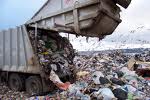- Coal-fired utility plants generate about 70 % of Colorado’s electricity. We cool our homes and buildings primarily with coal, and heat our indoor air and water primarily with natural gas. We Coloradans use about 10% more energy, and therefore more of our money, heating our homes than cooling them. Heat gain and heat loss can be significantly affected by attic ventilation and insulation and roofing choices.
- Coal and natural gas are non-renewable resources that produce greenhouse gas (CO2). Solar power and wind power are renewable energy resources that produce no CO2. (Xcel is on course to produce 15–20% of Colorado’s electricity with renewable energy in the next 15 years.) Solid, still-functional rooftops are the site of choice for most photovoltaic (PV) and thermal solar systems.
- Most steel roofing products are made from 35–85% recycled material and are 100% recyclable; and every pound of recycled steel used in manufacturing prevents 1,800 lbs. of CO2. Products with an Energy Star rating provide higher reflectivity and emissivity, for a cooler house, less energy usage, a cost savings, and less CO2.
- U.S. concrete production, including concrete roofing tiles, causes roughly 8% of all CO2 emissions. Clay tiles have a smaller environmental impact in their manufacturing and can be more durable and attractive. End-use tire rubber, hose, plastics, and carpet are now being used for high-recycled-content roofing products, the installation of which reduce end waste in landfills and curtail the use of high embodied-energy materials. For durability, value, and budget, however, asphalt shingles are preferred for most residential construction. Some asphalt shingles are Energy Star-rated, and lighter colors provide greater cooling benefits than darker ones. Currently, 99% of tear-off asphalt shingles are not recycled in the U.S. (100% go to the landfills in Colorado), though a handful of states use them in their hot mix asphalt for roads. Every pound of tear-off shingles recycled prevents 26 lbs. of CO2.
An ongoing discussion of green built roofing best practice, the importance of recycling asphalt tear off shingles, and the opportunities for cost savings for roofers, haulers and municipalities with the end use of making roads not waste
Recycled Asphalt Tear Off Shingles (RAS)
EnergySmart contractors are being encouraged to recycle any tear-off shingle waste from local projects...
see www.energysmartyes.com
ROOFCYCLE PROGRAM NEWS
Unfortunately, because of increased recycling volume of shingles, lack of space and limited market demand for RAS, Asphalt Specialties has closed down their recycling operations in Erie and at all their other Denver Metro locations as of 5/28/11, until further notice.
At this time, only Brannan Sand and Gravel, at 61st and Pecos, and Owens-Corning/Heritage Environmental at 64th and Pecos, both in Denver, are receiving tear off shingles for recycling.
New Opportunities for the Use and Promotion of RAS
Though Boulder County tear off shingle recycling operations are now largely curtailed by the shutdown of Asphalt Specialties local collection point, there are other encouraging developments for the eventual end use of RAS in large scale paving projects:
*In March of 2011 The Colorado Department of Transportation approved a revision of Section 401, Reclaimed Asphalt Shingles, which modifies CDOTs Standard Specifications for Road and Bridge Construction (in practical terms this means 10,000 to 20,000 tons of RAS may be used in CDOT approved paving projects this year).
*Asphalt Specialties has been awarded a contract to pave portions of State Highway 36 using a recycled asphalt pavement (RAP) and RAS mix design (the RAS portion shall be manufacturer scrap shingle stock in lieu of tear off shingles). More detail is provided below.
* A formal discussion with Lisa Friend and Jeff Callahan of Boulder County Resource Conservation Division and other recycling contractors occurred in April of 2011. This discussion helped with the gathering of initial information for a proposed feasibility study for the opening of a county Construction and Demolition Waste recycling facility which will include RAS and other construction material.
* The Colorado Springs Chamber of Commerce Sustainability Action Council brought a group of 40 – 50 members of their business community and local government to Boulder County in April with an aim to learn more about our sustainability practices in the public, private and non-profit sectors. This exchange brought about productive dialogue with our Colorado Springs counter parts and how best practices in Boulder County may be useful models for our neighbors to the south.
Our English & Spanish Videos Help Your Team Learn How To:
*Recycle Asphalt Tear Off Shingles for Road Paving
*Create Physical and Intellectual Infrastructure for a Roof Recycling Enterprise
*Achieve Regulatory Compliance
Your Company Can Benefit From:
*Cost Savings
*Green Marketing Opportunity
*Creating a Profitable Recycling Enterprise
*GHG Reduction, Landfill Diversion
*The Latest Testing and Delivery Protocol


Recycling the shingles is the way to go since lots of home owners have got asphalt shingles installed on their homes due to its low cost, so once they reach their life span, which is not too long as compared to metal or a slate roof then they need to be disposed of and what better way to dispose them by recycling them.
ReplyDeletehttp://mydfwroofer.com/roofing-fort-worth/